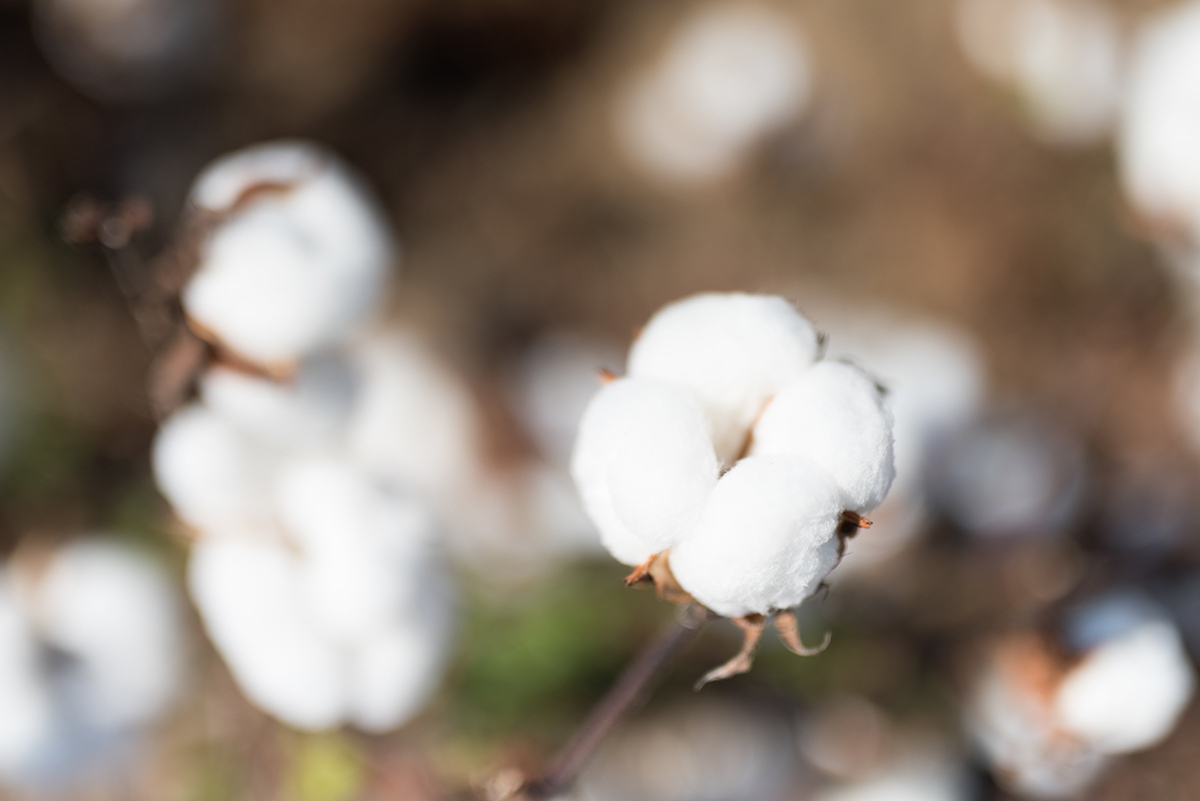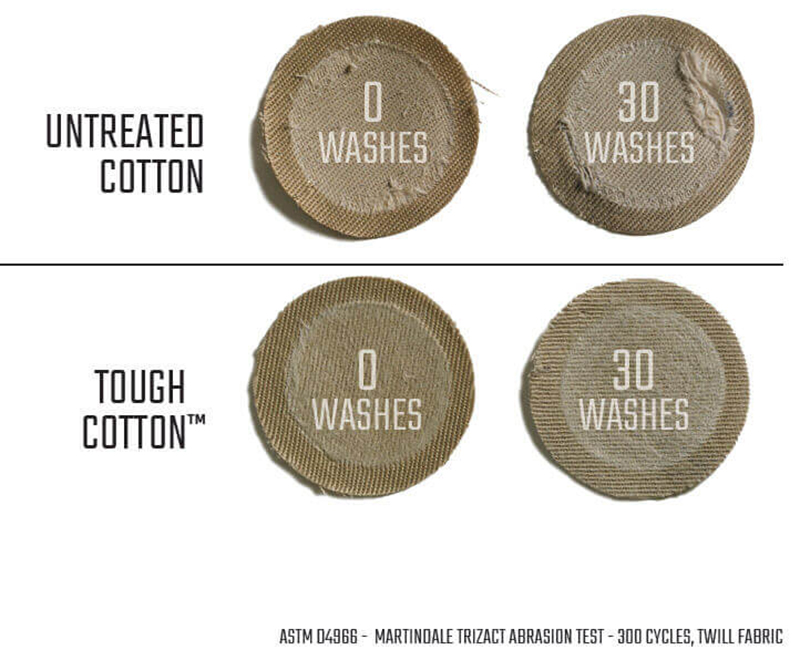
Sponsored by Cotton Incorporated
Gone are the days when most consumers purchase clothing solely based on fit, fashion or need. In recent years, consumers have raised their awareness and concern for how clothing is made and the way its production impacts the Earth, with young consumers leading the way in a call for action. In response, the textile industry is taking a serious look at how daily practices and natural fibres can help contribute to a healthier planet. For the US cotton industry and Cotton Incorporated it means investing in innovation at the farm and manufacturing levels while underscoring the enduring benefits of natural fibre choices for the consumer.
Cotton and carbon
GHG emissions have been wreaking havoc on our environment for years, emerging as a major component in climate change, as well as the increasingly volatile weather patterns we are experiencing across the earth. According to McKinsey & Company’s 2020 Fashion and Climate report, the manufacturing process causes the release of greenhouse gasses (GHGs) such as carbon dioxide (CO2) into the air, responsible for around 2.1bn metric tons of GHG emissions in 2018. The same report states that a predicted rise in population and consumption volumes could push carbon emissions to around 2.7bn metric tons a year by 2030 if no action is taken to reduce the emissions. As part of the industry wide effort to curb negative impacts on the environment, there has been a renewed emphasis on reducing carbon in the atmosphere while increasing soil carbon.
As a natural fibre grown from the earth, cotton already has a head start in reducing carbon in the environment. The cotton plant is incredibly efficient at trapping, or sequestering, carbon into itself (and the soil), so it is not released into the atmosphere as a GHG. During photosynthesis, the plant transforms CO2 and sunlight into glucose sugars, some of which are transformed into cellulosic fibres, or cotton lint. According to Dr Ed Barnes, senior director of agriculture and environmental research at Cotton Incorporated, 40% of a cotton garment is actually made of carbon.[1]
Even with this advantage, the US cotton industry recognises the need to continue decreasing carbon in the atmosphere as a way of investing in a better, more sustainable future, which is why it became a key action item in the industry’s 10-year sustainability goals established in 2015.
Innovations in cotton farming technology and production
Technical innovations are already helping to decrease GHG emissions associated with cotton production. The amount of CO2 produced per pound of cotton has seen substantial reduction since 1980, with a 25% decrease when measured in 2020.[2]
A key contributor to the decline is improved practices at the farm level. While the cotton plant already has a natural gift of sequestering carbon, maximising that gift is vital to see ongoing improvements. Soil conservation efforts, including no-till farming practices which involves growing crops without disturbing the soil beneath through tillage, increases the sequestration rate of CO2 within the soil while growing cotton[2]. Improved crop rotation and cover cropping can also benefit carbon sequestration. By implementing practices that trap carbon into the soil, farmers are able to prevent carbon from returning to the atmosphere as CO2, a known GHG causing climate change. In fact, if all the cotton farms in the world employed conservation tillage techniques, the global cotton acreage could remove emissions equivalent to taking 3.5m passenger cars off of the highways every year.[3]
Innovations in cotton performance and durability
While carbon retention is a key building block within cotton lint and the end cotton garment1 and science-driven innovations are contributing to ongoing CO2 reduction at the farm level of the supply chain, the opportunity for cotton to mitigate future climate impacts goes beyond the farm. In McKinsey & Company’s State of Fashion 2022, chief operating officer of Textile Exchange, Claire Bergkamp, asks if the product is durable and will have a long life, defining that as the crux. How can manufacturers make sure their products have a long life and actually benefit the atmosphere? By creating garments with a natural fibre recognised for carbon sequestration and longevity of use rather than a lab-made fibre known for a large carbon footprint [4] and longevity in waterways and landfill.
And while cotton is already recognised by consumers [5] for its natural durability, Cotton Incorporated understands that further enhancing the durability of cotton clothing and products is essential to holistic sustainability goals. The company says it is committed to enhancing the performance and durability of cotton clothing and products in a way that can positively impact environmental concerns and conservation efforts. That’s why the organisation created the durability-enhancing TOUGH COTTON™ technology to its lineup of performance technologies. This proprietary blend of fabric softeners and cross-linking agents can make cotton garments (think jackets, sweaters, workwear, denim jeans, activewear and childrenswear etc) more durable. With the use of this performance enhancement application, cotton items are more resistant to fading, thinning, abrasion, and colour loss — ultimately offering a longer garment life for the consumer (and potential downline consumers through second-hand use).
In the same durability mindset, high-speed warp knitting is also being used in cotton garment production for higher productivity and a stronger, tighter knit. Traditionally, warp knitting was reserved for polyester and nylon in athletic wear. Cotton Incorporated took on the challenge to find a method of warp knitting for cotton items by partnering with a leading warp knitting machinery manufacturer so manufacturers would have a 100% natural alternative to synthetic warp knits without reducing performance.
Further showing commitment to longevity of cotton products, Cotton Incorporated created the Blue Jeans Go Green™ denim recycling programme, which involves converting old denim jeans into insulating material for various applications. Since 2006, the programme has prevented over 2,100 tons of textile waste, specifically high-cotton content denim, from entering landfills, Cotton Incorporated says.
Helping to save the planet?
While often misunderstood, cotton is actually becoming a champion of sustainable efforts to benefit the global community, the organisation says. By harnessing the way in which cotton naturally traps carbon; embracing new farming techniques and emerging farming technologies; increasing the durability and performance of clothing and products; and establishing programs that contribute to a longer and circular life cycle are just some of the ways cotton plays a part in investing in a sustainable future and promoting a healthier, cleaner planet.
-
References
[1] Cotton Today - Carbon Capture and Storage. (2021). Cotton: Removing CO2 from the Atmosphere (video). https://cottontoday.cottoninc.com/our-sustainability-story/greenhouse-gases/carbon-capture-and-storage/
[2] Field to Market: The Alliance for Sustainable Agriculture, 2021. Environmental Outcomes from On-Farm Agricultural Production in the United States (Fourth Edition). ISBN: 978-0-578-33372-4
[3] Franzluebbers, A. J. (2010). Achieving Soil Organic Carbon Sequestration with Conservation Agricultural Systems in the Southeastern United States. Soil Science Society of America Journal, 74(2), 347–357. https://doi.org/10.2136/sssaj2009.0079
[4] Qian, W., Ji, X., Xu, P., & Wang, L. (2021). Carbon footprint and water footprint assessment of virgin and recycled polyester textiles. Textile Research Journal, 91(21–22), 2468–2475. https://doi.org/10.1177/00405175211006213
[5] Cotton Council International and Cotton Incorporated’s 2020 Global Durability Study
Have your say. Join the conversation and follow us on LinkedIn




